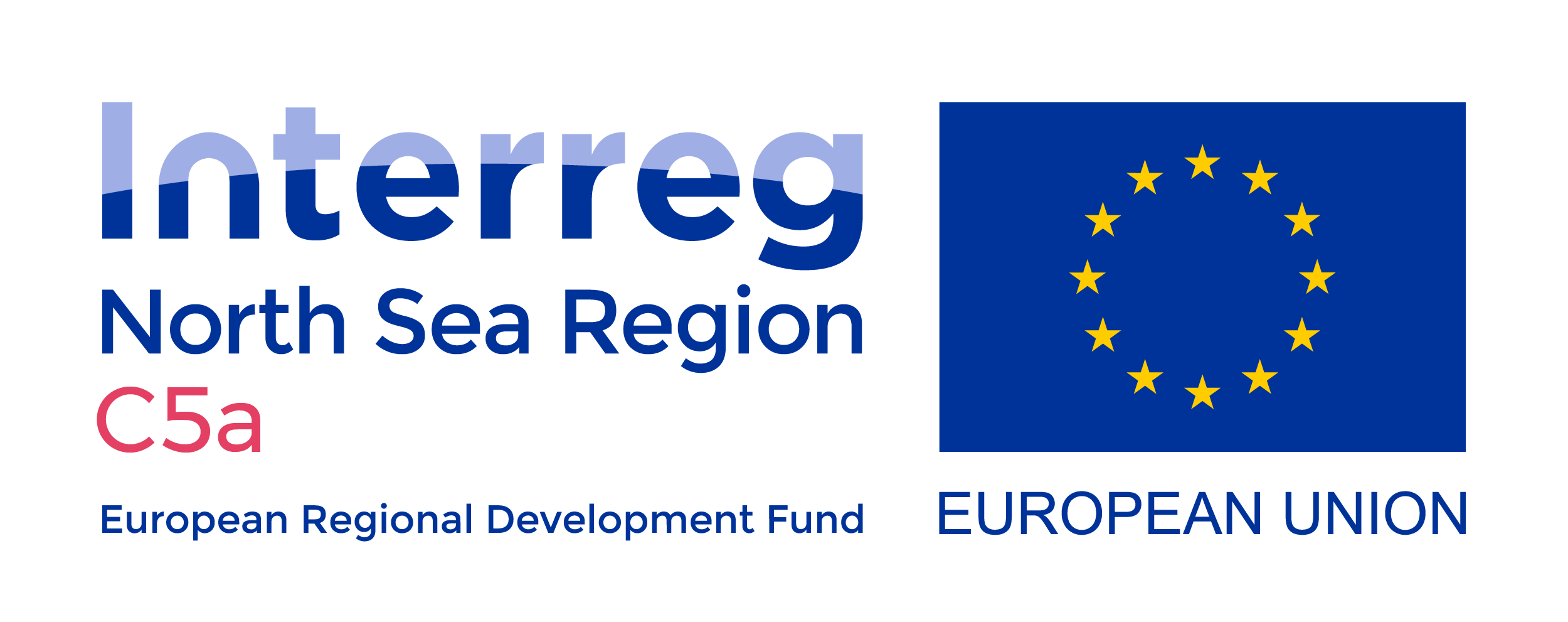Vi använder cookies för att webbplatsen ska fungera på ett bra sätt för dig. Genom att surfa vidare godkänner du att vi använder cookies.
Show reader view
Into Practice
Practical guidelines are essential to put the Cloud-2-Coast approach into practice. These guidelines target local and sub-national regional organizations that are responsible for climate change adaptation.
The C5a guidelines consist of three complementing categories:
-
-
Pillars of Cloud-2-Coast
-
1a. Whole-system approach
1b. Adaptive approach
1c. Inclusive process
1d. Continuous dialogue -

-
-
Tools for implementation
-
2a. Identify the current status and needs
2b. Tailor the Cloud-2-Coast approach -

-
-
Mainstreaming strategies
-
3a. Programmatic
3b. Managerial
3c. Intra-organizational
3d. Inter-organizational
3e. Directed -

Pillars of Cloud-2-Coast
The application of the Cloud-2-Coast approach starts by adopting its four pillars.
Guideline 1a:
Whole-system approach
Whole-system approach requires an understanding of the boundaries and behaviour of the system across spatial and temporal scales, from cloud to coast and from days to decades. Read more…
Guideline 1b.
Adaptive approach
Adaptive approach recognizes that past decisions influence the options for today, and the decisions made today have implications on how the options can be implemented in the future. Read more…
Guideline 1c.
Inclusive process
Climate change adaptation requires the participation of all stakeholders, not only professionals and governmental authorities, but also citizens and private companies. Read more…
Guideline 1d.
Continuous dialogue
Cooperation is central to managing flood risks and it should be facilitated by a continuous dialogue amongst all those involved. Read more…
Tools for implementation
Based on the experience gained within the C5a project, we provide several tools for implementing the Cloud-2-Coast approach in practice and ensuring that it fits to different contexts.
Guideline 2a:
Identify the current status and future needs for climate adaptation
Review existing strategies and plans: Application of the Cloud-2-Coast approach never starts from scratch. There are goals and objectives expressed in existing policy documents at national, EU and global levels. A review of such documents is essential to identify the adaptation visions and requirements from the higher levels.
The application of the Cloud-2-Coast approach is not a ‘once-only’ process, either. To make the best of it, Cloud-2-Coast should be applied multiple times to compare the results over years and identify improvement points that can be implemented for increasing climate resilience. The insights from each application as well as supporting data and documents should be kept within the responsible organizations, which will also contribute to preserving institutional memory. The decision on how often to apply the Cloud-2-Coast approach can be guided by the existing local and national policy cycles.
Map the interests and influence of stakeholders: It is essential not only to identify relevant stakeholders, but also to analyse their interests and influence in the implementation of the Cloud-2-Coast approach. Read more…
Achieving effective results from climate adaptation actions requires the engagement of all stakeholders. This would align with the Cloud-2-Coast pillars “inclusive approach” and “continuous dialogue”. There is no benchmark on which departments or organizations should be involved in the application of Cloud-2-Coast, nor on the number of individuals or organizations to involve. Since the target users of the approach are local and sub-national regional authorities, involving too many individuals or organizations might be counter-productive due to possible capacity and flexibility constraints.
Identify the needs for institutional strengthening: Based on the actions above, the needs for institutional strengthening towards climate resilience should be identified for the (near) future. While the primary objective of the Cloud-2-Coast approach is making better decisions for climate resilience, the approach can also be adopted to raise awareness within the different departments of the responsible organization, as well as among the relevant stakeholders.
Guideline 2b:
Tailor the Cloud-2-Coast approach to the context
Understand the context: The C5a project doesn’t aspire to identify “best practices” or “blueprints” for climate change adaptation. Instead, the Cloud-2-Coast approach should be tailored to the context that is shaped by social, political, economic and climatic factors.
Organize “reflection workshops”: The C5a team tested the Cloud-2-Coast by engaging their stakeholders through “reflection workshops”.
These workshops aimed to develop a common understanding of climate-related challenges, to explore how the approach can be applied in practice, and to evaluate the relevance and applicability of the approach in the case. Such workshops are essential to apply the Cloud-2-Coast approach in other cases.
During the C5a project, the workshops and the engagement of stakeholders have been significantly affected by the COVID-19 pandemic. Workshops had to be cancelled or postponed due to mobility restrictions and lockdowns. Most of the C5a partners also adapted to these conditions by meeting virtually instead of face-to-face or organizing small group discussions instead of large workshops.
Benefit from the C5a toolbox: On the C5a website, many tools are available from the seven NSR projects and other relevant climate adaptation initiatives. Read more…
Mainstreaming strategies
These guidelines ensure the long-term sustainability and impact of the Cloud-2-Coast approach at multiple governance levels and relevant policy domains. For this purpose, we recommend multiple mainstreaming strategies to integrate the Cloud-2-Coast approach into existing governance structure and policy domains.
The sustainability and impact of the Cloud-2-Coast approach depends on its integration with existing governance structures and policy sectors. Multiple mainstreaming strategies can be used for enabling this integration process.
“The motivation for mainstreaming originates from the need to change the dominant paradigm. Accordingly, mainstreaming is framed as incorporating new aspects into existing core work and it has been used for cross-cutting issues” (Wamsler et al. 2014). Such cross-cutting issues typically include, gender, environment, risk reduction, and more recently climate change adaptation. Building on this notion, the C5a team defines mainstreaming as “the modification of a specific type of core work to consider one or more pillars of the Cloud-2-Coast approach and to act upon it towards climate change adaptation.”
We recommend five types of mainstreaming strategies. When implementing each strategy, practitioners can experience barriers, which impede or hinder the adoption of Cloud-2-Coast, as well as enablers, which support or facilitate the adoption. These barriers and enablers are illustrated with examples from the C5a cases.
Guideline 3a:
Programmatic mainstreaming
Definition: Integration of the organization’s programmes and projects in multiple sectors, such as flood protection, urban planning, housing, agriculture, nature conservation, etc., by applying one or more pillars of Cloud-2-Coast in those programmes and projects.
🔥 Challenge in defining goals to achieve a resilient society. (Ringkøbing Fjord)
🔥 Overlapping description, no guidance and challenge in understanding the approach, e.g., the definition of “adaptive”. (The Zwin)
🔥 Lack of political interest and commitment in sectoral programmes, such as housing and flood protection. Sense of urgency is short lived; it lasts as long as the crisis. (Weijerswold)
🔥 Understanding the approach, e.g., “adaptive approach” probably also applies to the other pillars such as “inclusive process”. The names of the pillars maybe not completely match the content according to the definition, which can be difficult for other stakeholders to understand. (River Klarälven)
🍀 Analyzing climate impacts in combination with other sectoral issues to identify the mutual benefits between climate change adaptation and the goals of land use planning and agricultural production. Identifying such mutual benefits can support the identification of measures that facilitate most acceptable and cost-effective choice. (Weijerswold)
🍀 Formulation of a spatial vision, which integrates multiple sectoral goals from urban development, housing and flood protection, based on the Cloud-2-Coast approach. (City of Dordrecht)
🍀 Integration of the Cloud-2-Coast approach into existing planning processes and cycles: Spatial Risk Assessment (Kent and City of Dordrecht), Delta Plan for Spatial Adaptation (Weijerswold), DK2020 municipality planning. (Ringkøbing fjord)
Guideline 3b:
Managerial mainstreaming
Definition: Modification of the management and working structures, such as internal norms and job descriptions of personnel, in line with the pillars of Cloud-2-Coast.
🔥 Lack of alignment with the project development process that limits step-by-step guidance. (Ringkøbing fjord)
🔥 Upscaling of the Cloud-2-Coast approach into practice requires sustained managerial process, which is often lacking. (Lower Saxony mainland coast and The Zwin)
🍀 Understanding the Cloud-2-Coast approach as well as finding vision and motivation – invest time early, in a short and long-term planning. (River Klarälven)
🍀 Innovative agreement on the management of the Zwin area that existed years before the works. Appointment of a specific, cross-organizational project manager and the coordination of the work by a consortium. Including the Zwin nature reserve as a Natura 2000 area, which opened the way for changing the management. (The Zwin)
Guideline 3c:
Intra-organizational mainstreaming
Definition: Modification of the organization’s way of operation, such as establishing interdisciplinary teams and increased collaboration among departments to apply the pillars of Cloud-2-Coast.
🔥 Responsibilities, interests and objectives about climate adaptation differ between the departments of the same organization. (Weijerswold and The Zwin)
🔥 Uncertainty – the purpose of an adaptive approach is to enable action in the face of uncertainty, but explicit recognition of uncertainty often creates a barrier to action rather than enabling it especially in a political organisation with competing priorities. (Kent).
🔥 Transition from hierarchical structure to network management within the organization, and lack of cooperation among departments that work on climate adaptation. (The Zwin)
🍀 Improved evidence, or improved methods of presenting existing evidence, targeted to different audiences, to ‘minimise’ uncertainty (in the decision being made?) to encourage action. (Kent).
🍀 Long history of intra-organizational collaboration that facilitates a shared vision among departments. (Weijerswold)
🍀 Show the whole organization that Cloud-2-Coast approach has benefits for whole organizations, for all work areas, then they will realize that they need each other and seek each other out. (River Klarälven)
Guideline 3d:
Inter-organizational mainstreaming
Definition: Promotion of cooperation among organizations using Cloud-2-Coast towards knowledge exchange and capacity development. Cooperation also facilitates comparing progress across organizations and drawing joint lessons for future applications.
🔥 Stakeholder relationships that limit participation and cooperation, such as lacking or different interests (River Klarälven, Kent, Ringkøbing fjord, Weijerswold) and unclear responsibilities (Lower Saxony mainland coast, Weijerswold and Ringkøbing fjord) about climate adaptation.
🔥 Difficult to maintain in the long run (beyond C5a) without a champion/process manager of the cooperation. (City of Dordrecht)
🔥 No time or funding available for cross-organisational work, which is seen as a burden on time, and not a core responsibility of any organisation. Overlap between internal organization and partner’s work to overcome institutional barriers to collaboration. (Kent)
🍀 Inclusive process with a meaningful participation and building upon ongoing partnership. (Kent and Lower Saxony mainland coast)
🍀 Consider cross boundaries and geographical scale – upstream, downstream, real dialogue vs top-down decision making. (Weijerswold)
🍀 Addressing multiple climate issues, such as flood, drought and water quality, through the involvement of large stakeholder groups and the use of a common language. (Weijerswold and Ringkøbing fjord)
Guideline 3e:
Directed mainstreaming
Definition: Improved science-policy integration and conceptual shift with the Cloud-2-Coast approach through support from the policy and management levels. Such support is essential for the ownership and sustainability of results and for accountability within and among different governance levels.
🔥 Lack of transformational change, such as focusing on the flood management silo rather than urban development. (City of Dordrecht)
🔥 Lack of awareness and interest from the grassroot level. (Ringkøbing fjord)
🔥 Financial resources coming from different organisations requires more time and limited flexibility. (The Zwin)
🔥 Different long-term scenarios are available, but it is unclear which one is the most appropriate. (Weijerswold)
🍀 Science-policy integration to sustain dialogue and incorporation into practice, ‘reflexive’ planning (City of Dordrecht), ‘ordinary’ planning (River Klarälven), and ‘master’ planning (Lower Saxony mainland coast).
🍀 Climate change is recognized by politicians and there is a national-level multi-layered safety approach to climate adaptation. (Weijerswold)
🍀 Willingness to cooperate from the management level. (Ringkøbing fjord)
